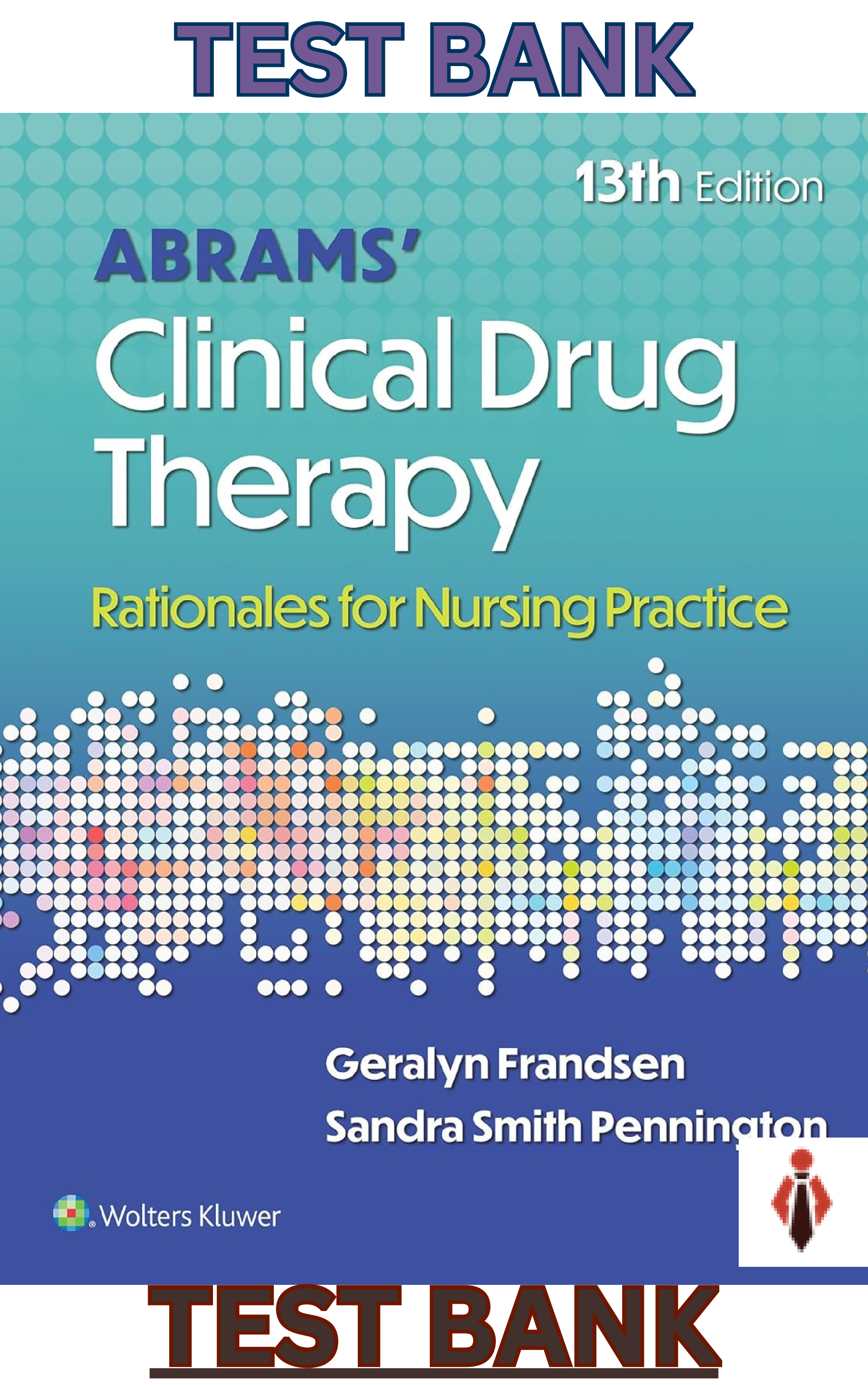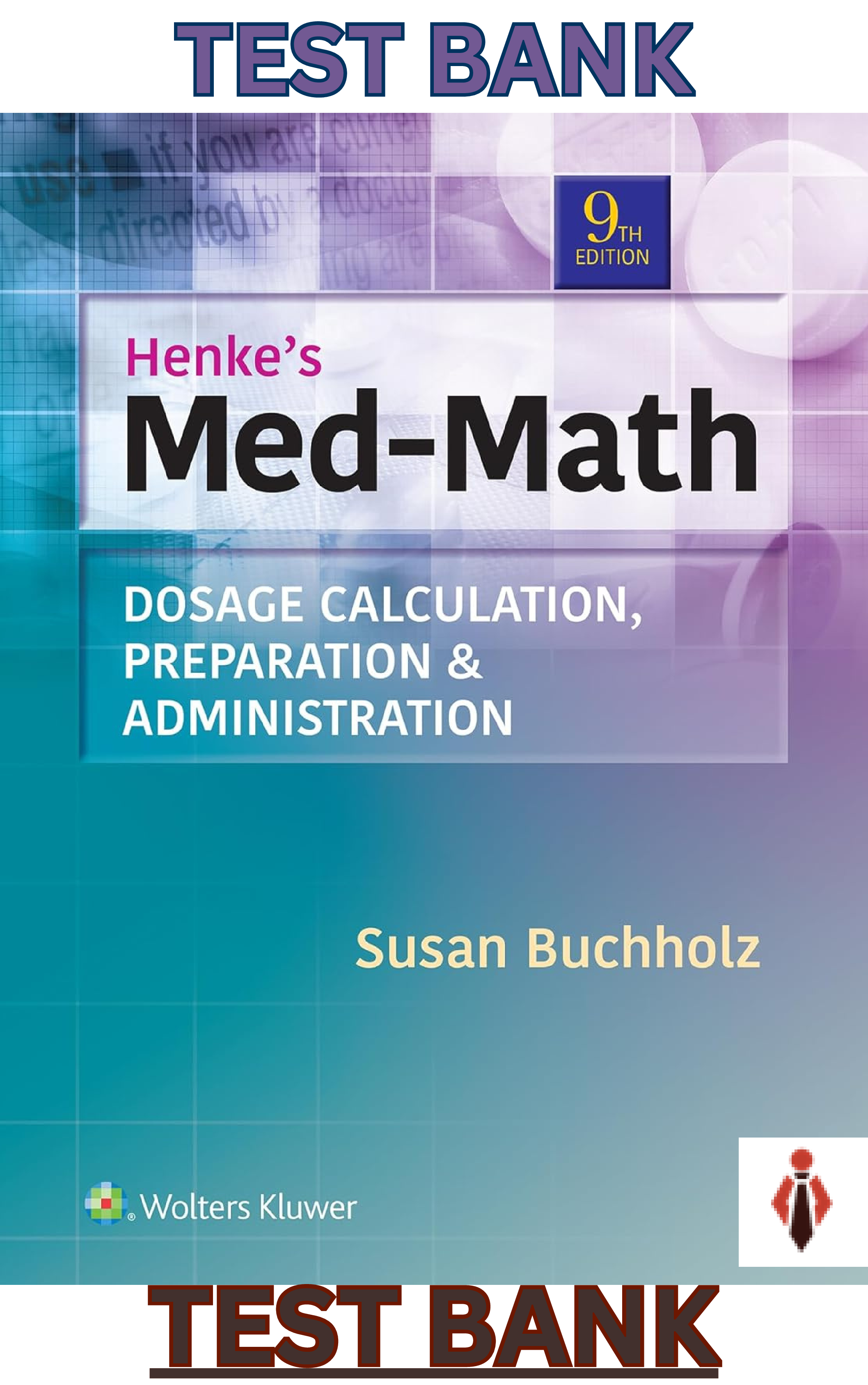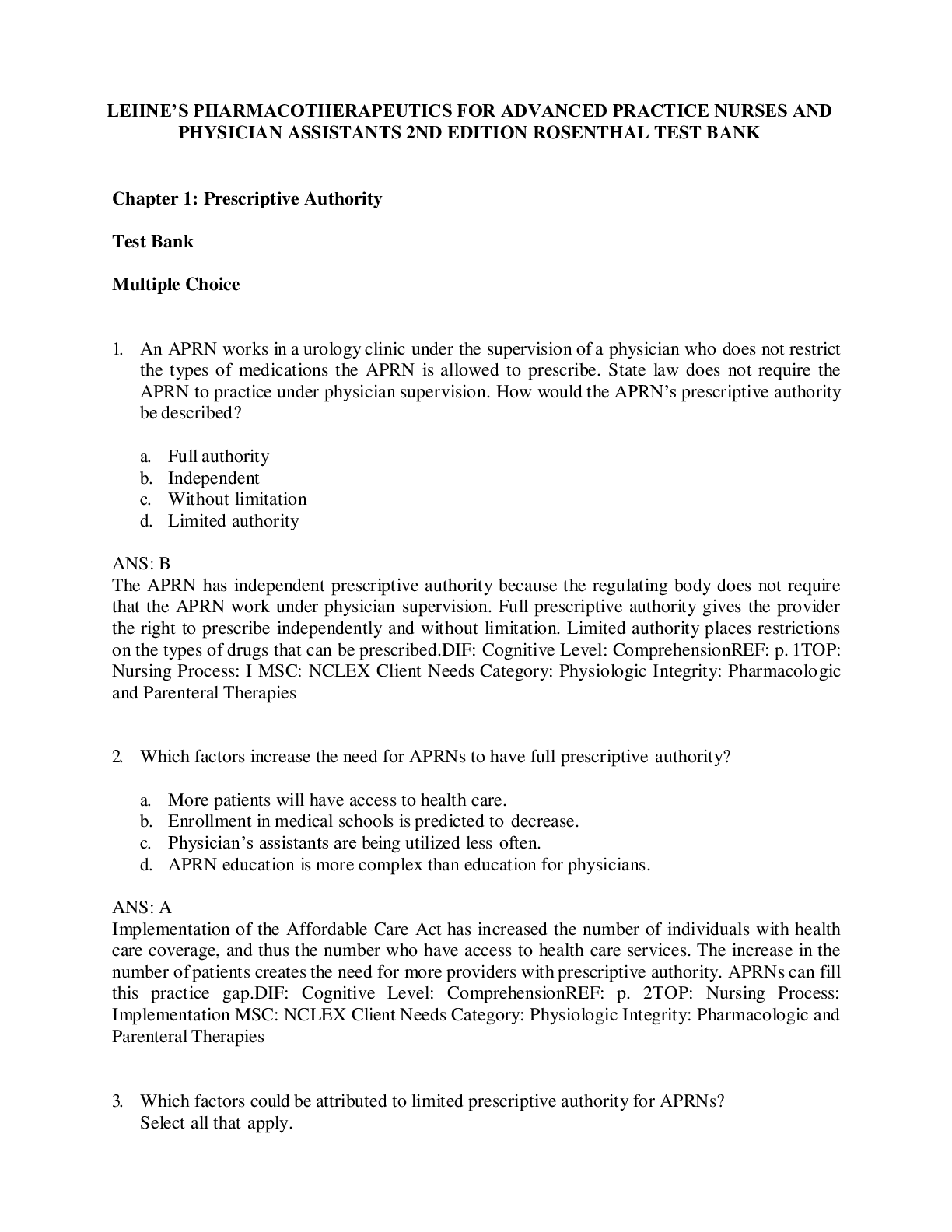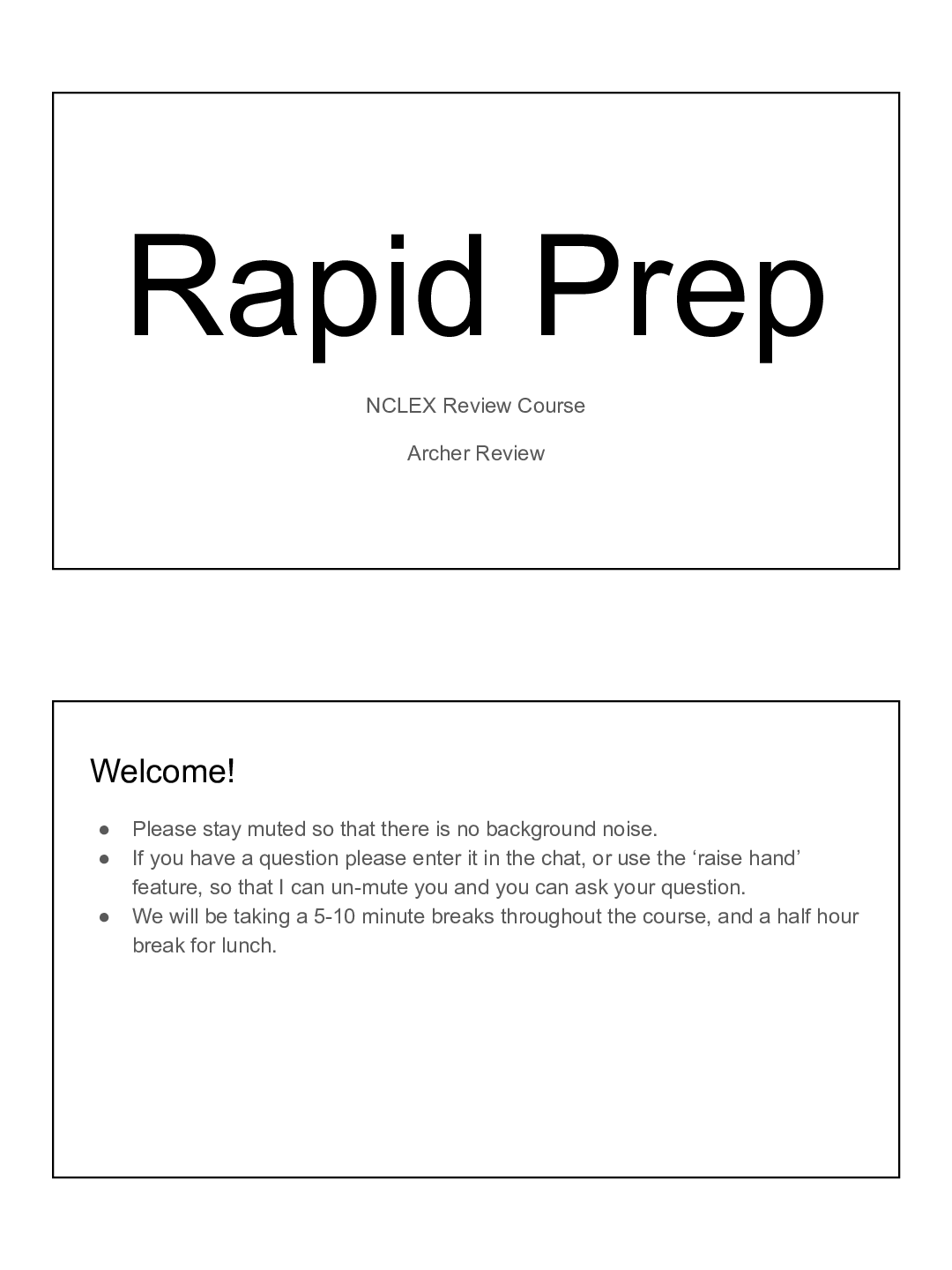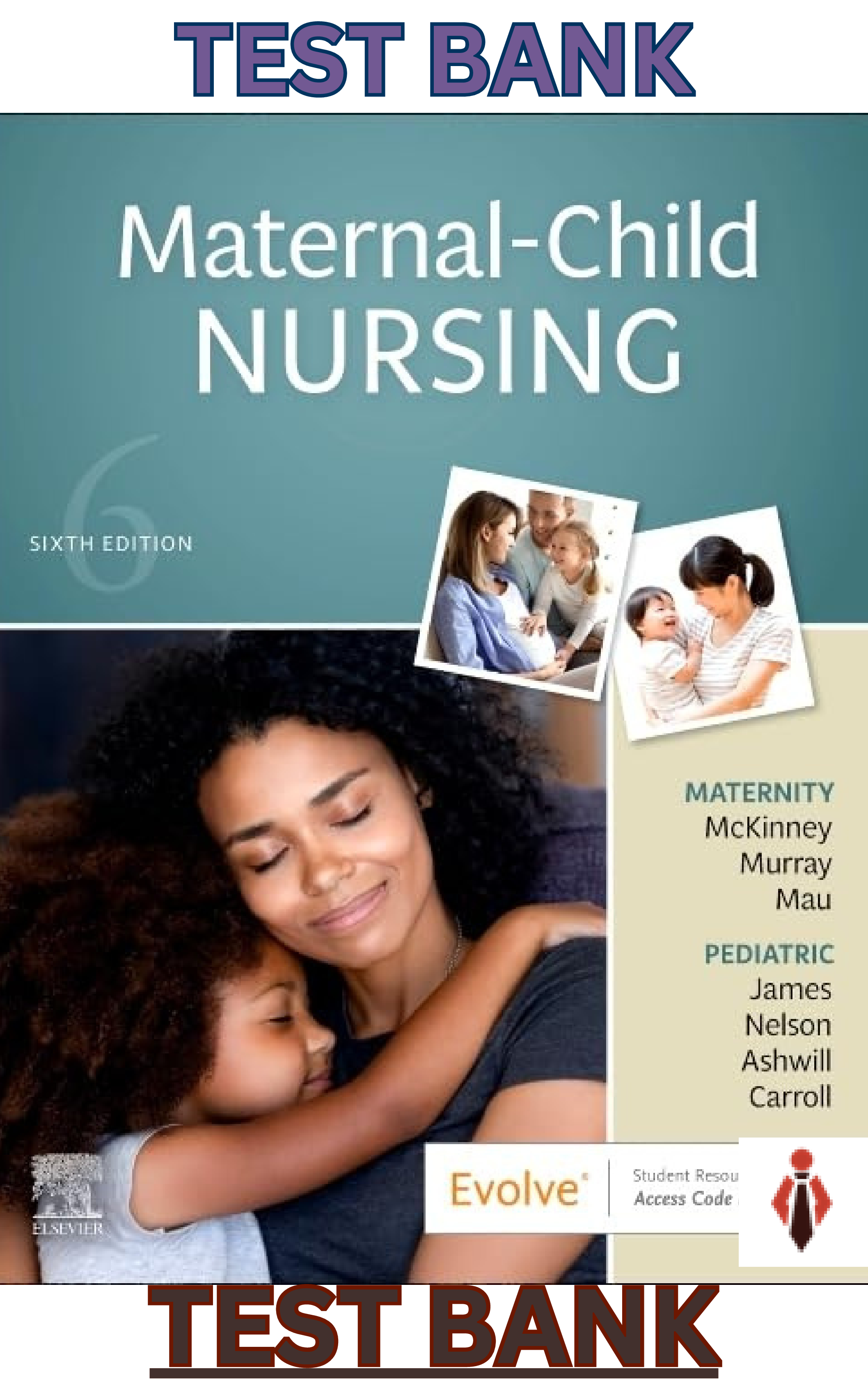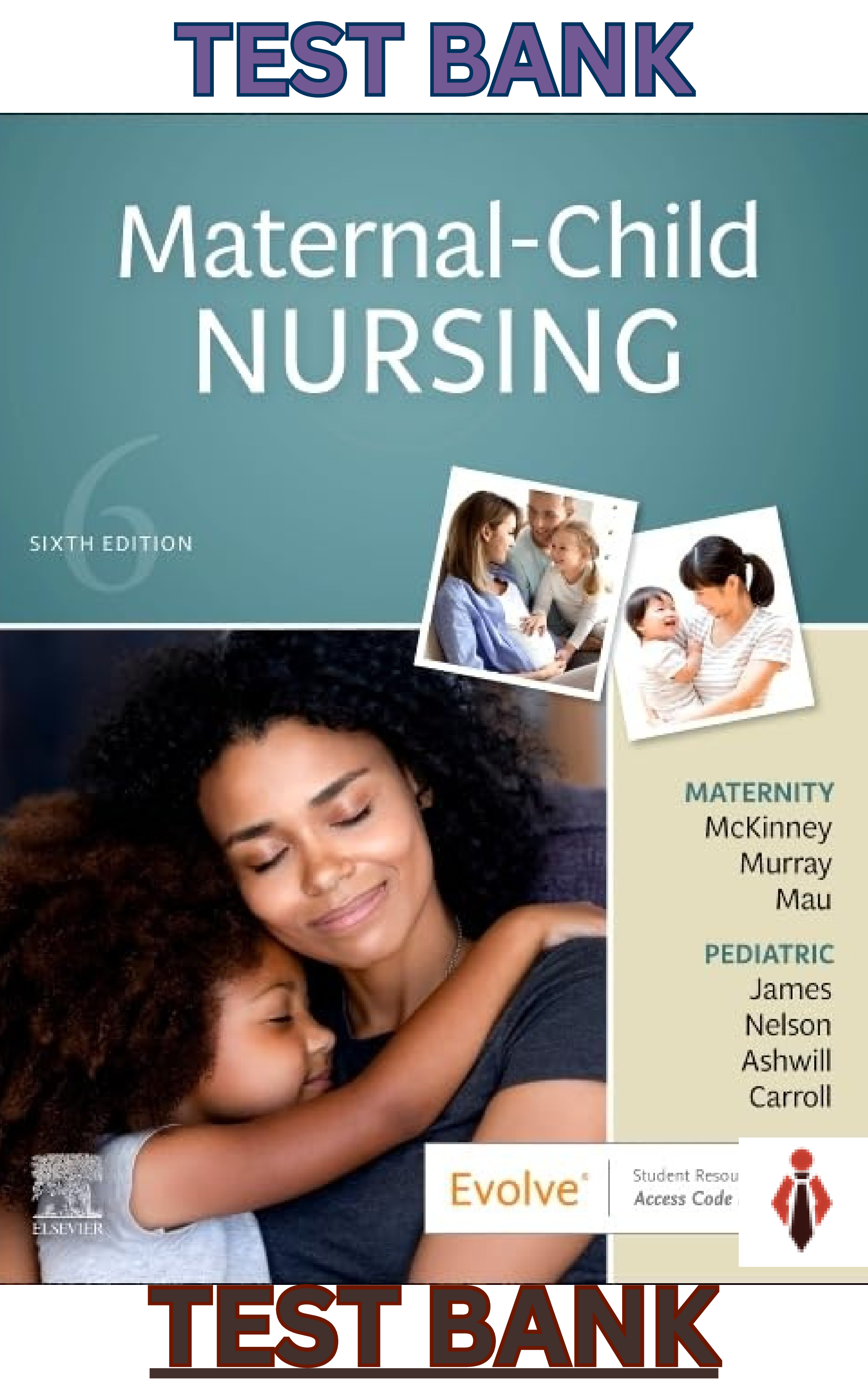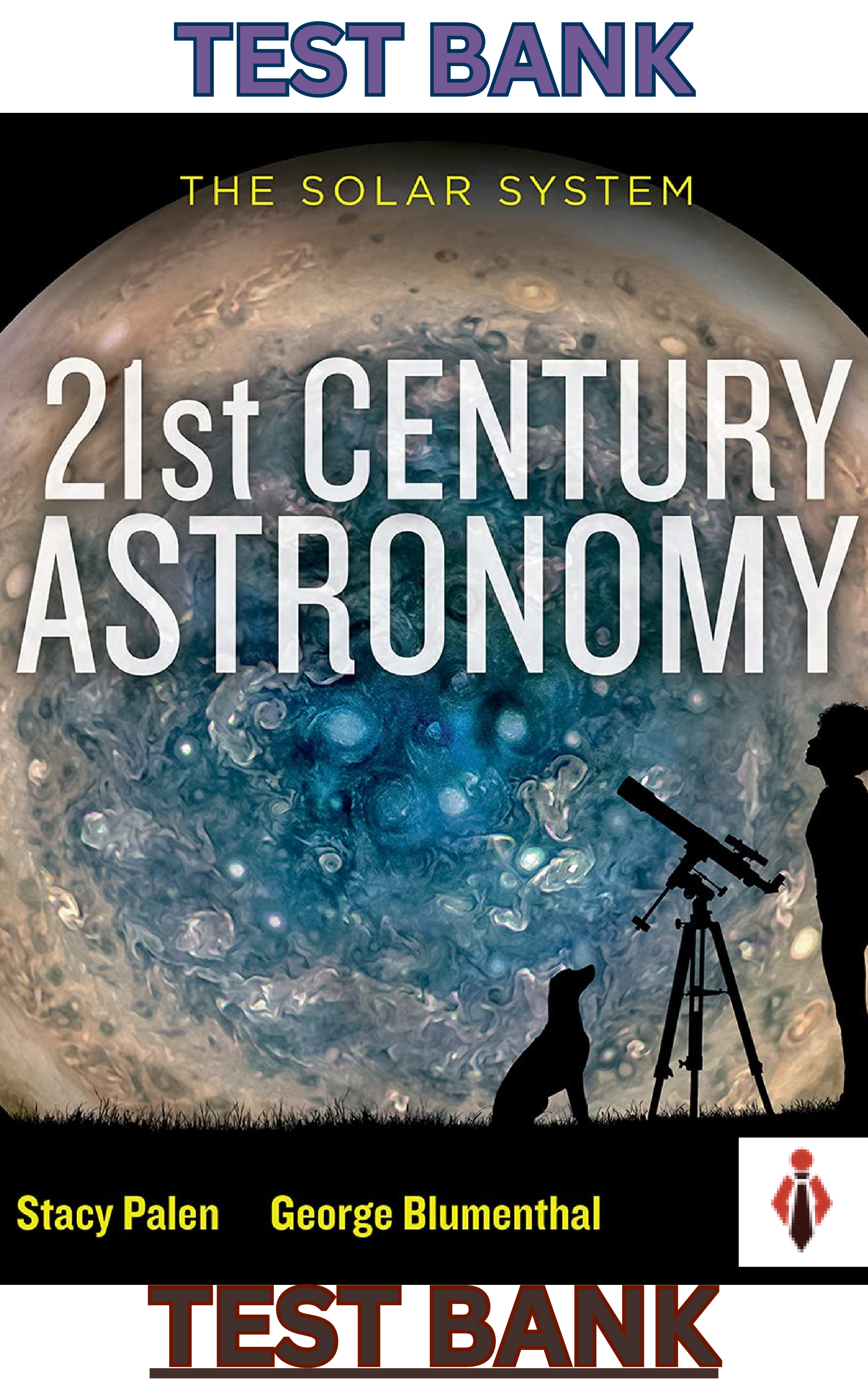Psychology > TEST BANK > Psych-2800-Testbank-5-8 Drugs and the Neuroscience of Behavior An Introduction to Psychopharmacology (All)
Psych-2800-Testbank-5-8 Drugs and the Neuroscience of Behavior An Introduction to Psychopharmacology 2nd Edition Prus Test Bank
Document Content and Description Below
Chapter 5: Drugs of Abuse Test Bank Multiple Choice 1. All of the following were implications of the Harrison Narcotics Act except: a. labeled drugs as controlled substances. b. restricted sale o... f narcotics. c. hampered prescribing narcotics for opioid withdrawal symptoms. d. allowed narcotic sales for only medical purposes. Ans: A Answer Location: Regulatory Agencies and Drug Classification Learning Objective: Regulatory Agencies and Drug Classification Cognitive Domain: Analysis Difficulty Level: Medium 2. The Harrison Narcotics Act: a. allowed prescribing opioids for treating opioid withdrawal symptoms. b. ranked narcotics by their abuse potential. c. listed drugs as controlled substances. d. restricted the sale of opioids to only medical uses. Ans: D Answer Location: Regulatory Agencies and Drug ClassificationInstructor Resource Prus, Drugs and the Neuroscience of Behavior: An Introduction to Psychopharmacology SAGE Publishing, 2017 Learning Objective: Regulatory Agencies and Drug Classification Cognitive Domain: Knowledge Difficulty Level: Medium 3. The law that restricted the sale of opioids for only medical uses was called: a. the Harrison Narcotics Act. b. the Controlled Substance Act. c. the Drug Enforcement Act.Instructor Resource Prus, Drugs and the Neuroscience of Behavior: An Introduction to Psychopharmacology SAGE Publishing, 2017 d. the 21st Amendment. Ans: A Answer Location: Regulatory Agencies and Drug Classification Learning Objective: Regulatory Agencies and Drug Classification Cognitive Domain: Knowledge Difficulty Level: Easy 4. A new drug was given a schedule V classification. This indicates: a. the drug has no abuse potential and has medical uses. b. the drug has high abuse potential and does not have medical uses. c. the drug has relatively low abuse potential and has medical uses. d. the drug has no abuse potential and does not have medical uses. Ans: C Answer Location: Regulatory Agencies and Drug Classification Learning Objective: Regulatory Agencies and Drug Classification Cognitive Domain: Application Difficulty Level: Medium 5. A new drug given a schedule I classification suggests: a. the drug is too new to know about its medical uses. b. the drug is only used as a drug of abuse. c. the drug produces a high similar to other schedule I substances. d. its adverse effects outweigh its potential medical uses. Ans: B Answer Location: Regulatory Agencies and Drug Classification Learning Objective: Regulatory Agencies and Drug Classification Cognitive Domain: Comprehension Difficulty Level: Medium 6. A new drug given a schedule II classification indicates: a. the drug has high abuse potential and few medical uses.Instructor Resource Prus, Drugs and the Neuroscience of Behavior: An Introduction to Psychopharmacology SAGE Publishing, 2017 b. the drug has high abuse potential and legitimate medical uses. c. the drug has low abuse potential and legitimate medical uses. d. the drug has low abuse potential and few medical uses. Ans: B Answer Location: Regulatory Agencies and Drug Classification Learning Objective: Regulatory Agencies and Drug Classification Cognitive Domain: Application Difficulty Level: Easy 7. The U.S. federal law that regulates sale and possession of drugs identified as controlled substances is called the: a. 21st Amendment. b. Drug Enforcement Act. c. Controlled Substances Act. d. Harrison Narcotics Act. Ans: C Answer Location: Regulatory Agencies and Drug Classification Learning Objective: Regulatory Agencies and Drug Classification Cognitive Domain: Knowledge Difficulty Level: Easy 8. Early clinical definitions of addiction focused on the development of tolerance, physical dependence, and: a. years of substance use. b. physical withdrawal symptoms. c. medical uses of the substance. d. craving. Ans: D Answer Location: Clinical Definitions and the Diagnosis of Drug Addiction Learning Objective: Regulatory Agencies and Drug Classification Cognitive Domain: KnowledgeInstructor Resource Prus, Drugs and the Neuroscience of Behavior: An Introduction to Psychopharmacology SAGE Publishing, 2017 Difficulty Level: Hard 9. A strong urge to use a drug is called: a. a drug high. b. preference. c. craving. d. physical dependence. Ans: C Answer Location: Clinical Definitions and the Diagnosis of Drug Addiction Learning Objective: Regulatory Agencies and Drug Classification Cognitive Domain: Knowledge Difficulty Level: Easy 10. A long-time user of a substance who is experience an intense desire to seek and use the substance is likely experiencing: a. drug cravings. b. physical drug dependence. c. relapse. d. significant social and occupational difficulties. Ans: A Answer Location: Clinical Definitions and the Diagnosis of Drug Addiction Learning Objective: Regulatory Agencies and Drug Classification Cognitive Domain: Application Difficulty Level: Medium 11. The occurrence of urges to use a drug after a history of using the drug suggests that: a. urges entirely account for continued use of a substance. b. urges are an important component of habitual drug use. c. a person had used a substance for a long time. d. the drug was likely a schedule I controlled substance. Ans: BInstructor Resource Prus, Drugs and the Neuroscience of Behavior: An Introduction to Psychopharmacology SAGE Publishing, 2017 Answer Location: Clinical Definitions and the Diagnosis of Drug Addiction Learning Objective: Regulatory Agencies and Drug Classification Cognitive Domain: Comprehension Difficulty Level: Hard 12. Which of the following suggests that a person has a substance use disorder? a. A person was introduced to a drug at a party last night and can’t wait to try it again. b. A person continues using a drug with abuse potential for treating a particular disorder. c. Drug use continues despite a person knowing about all of the problems it is causing in his life. d. A person experienced severe physiological effect after taking a substance. Ans: C Answer Location: Clinical Definitions and the Diagnosis of Drug Addiction Learning Objective: Regulatory Agencies and Drug Classification Cognitive Domain: Application Difficulty Level: Medium 13. A return to a chronic drug use state that meets the clinical features of a substance use disorder is called: a. craving. b. dependence. c. relapse. d. early remission. Ans: C Answer Location: Clinical Definitions and the Diagnosis of Drug Addiction Learning Objective: Regulatory Agencies and Drug Classification Cognitive Domain: Knowledge Difficulty Level: Medium 14. A patient identified as in the type of remission called “maintenance therapy” suggests: a. a strong likelihood of long-term cessation from drug use. [Show More]
Last updated: 1 year ago
Preview 1 out of 162 pages
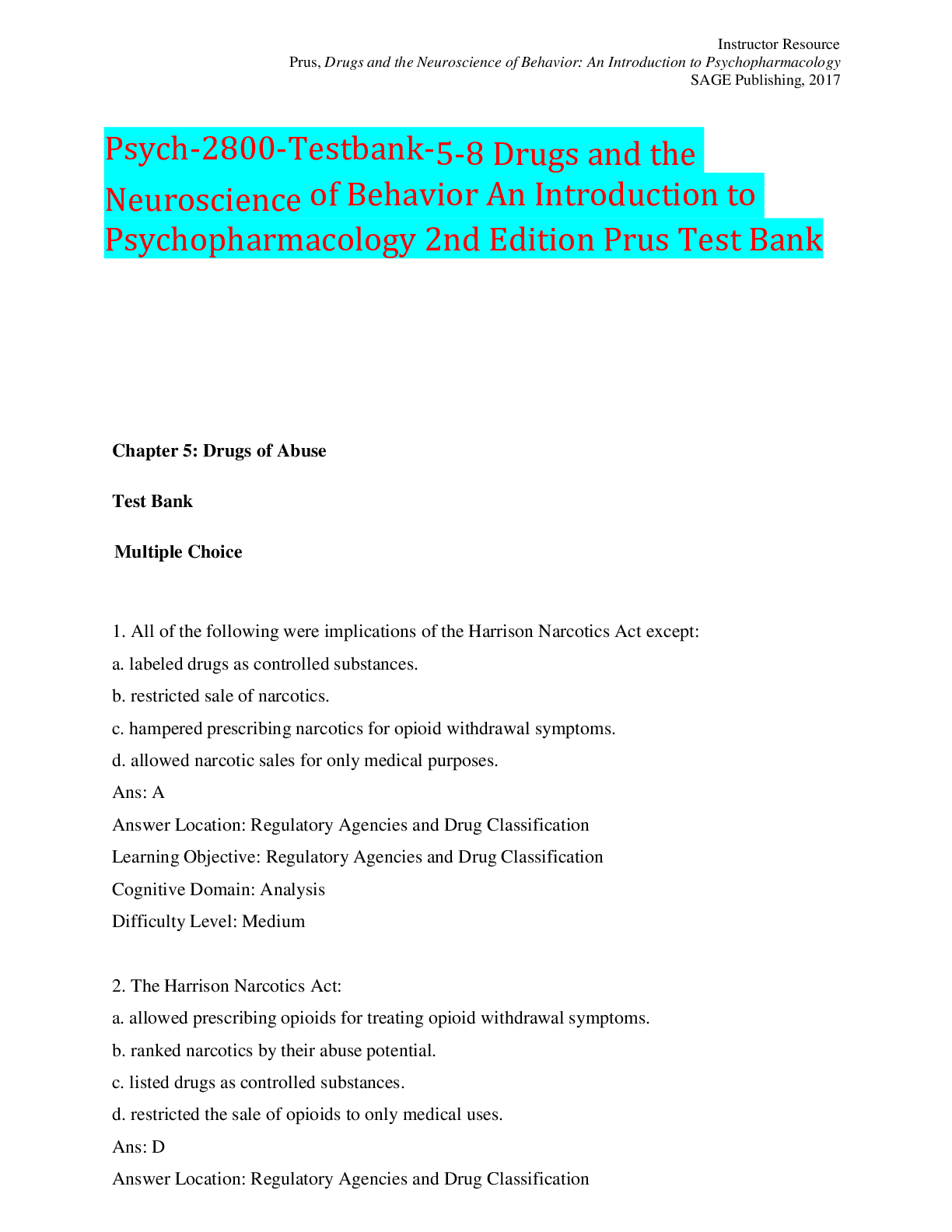
Reviews( 0 )
Document information
Connected school, study & course
About the document
Uploaded On
Apr 27, 2023
Number of pages
162
Written in
Additional information
This document has been written for:
Uploaded
Apr 27, 2023
Downloads
0
Views
57

.png)
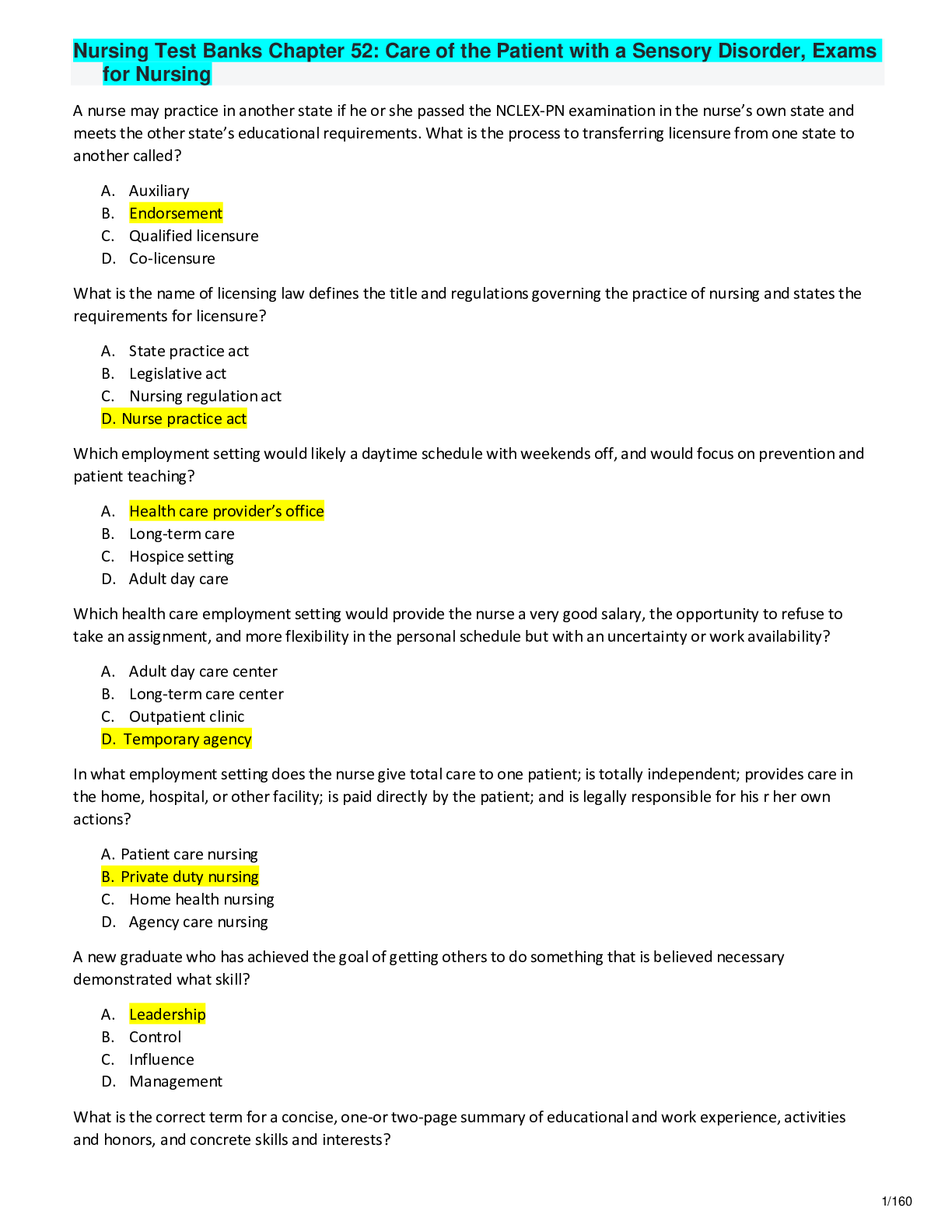

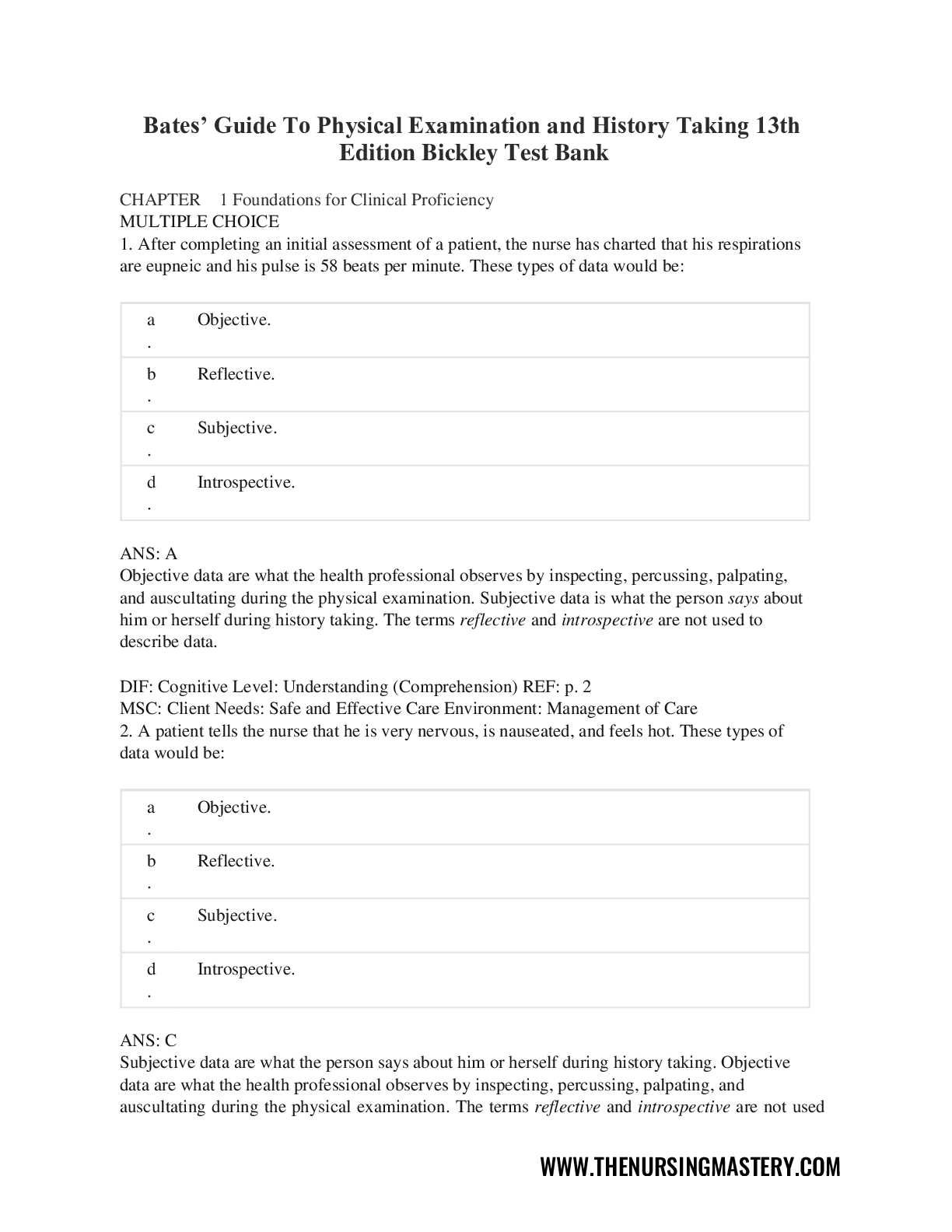

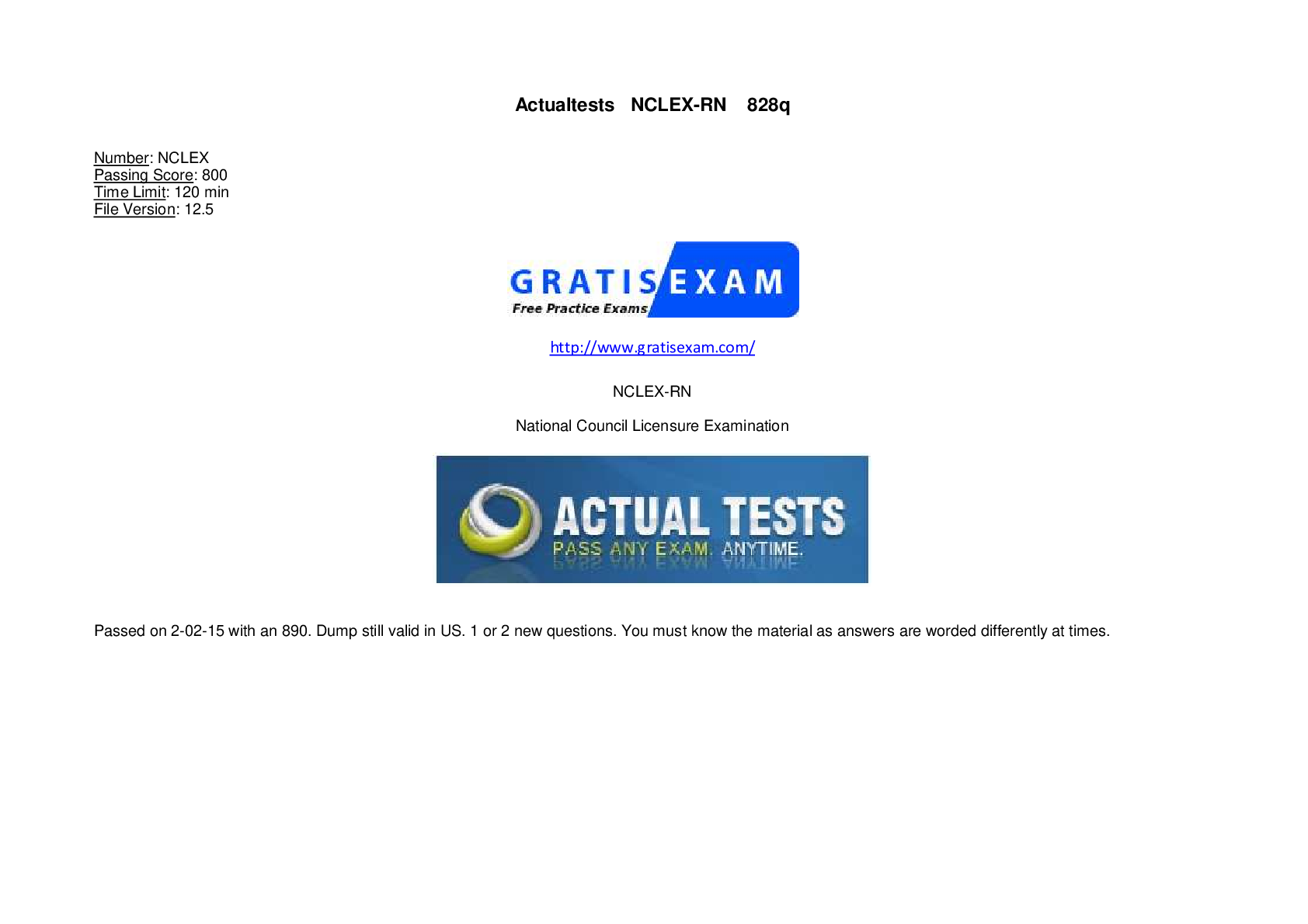



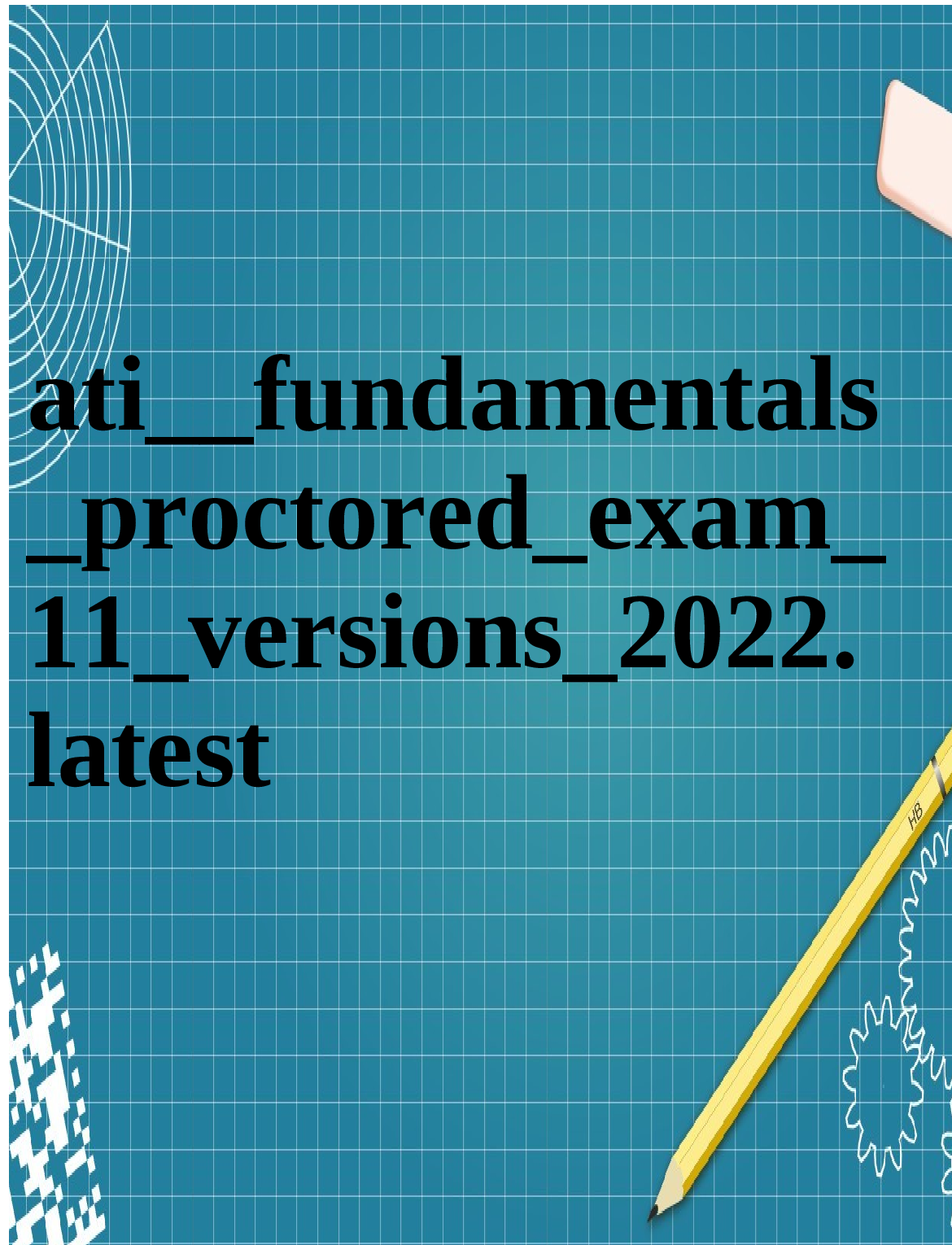


.png)
.png)
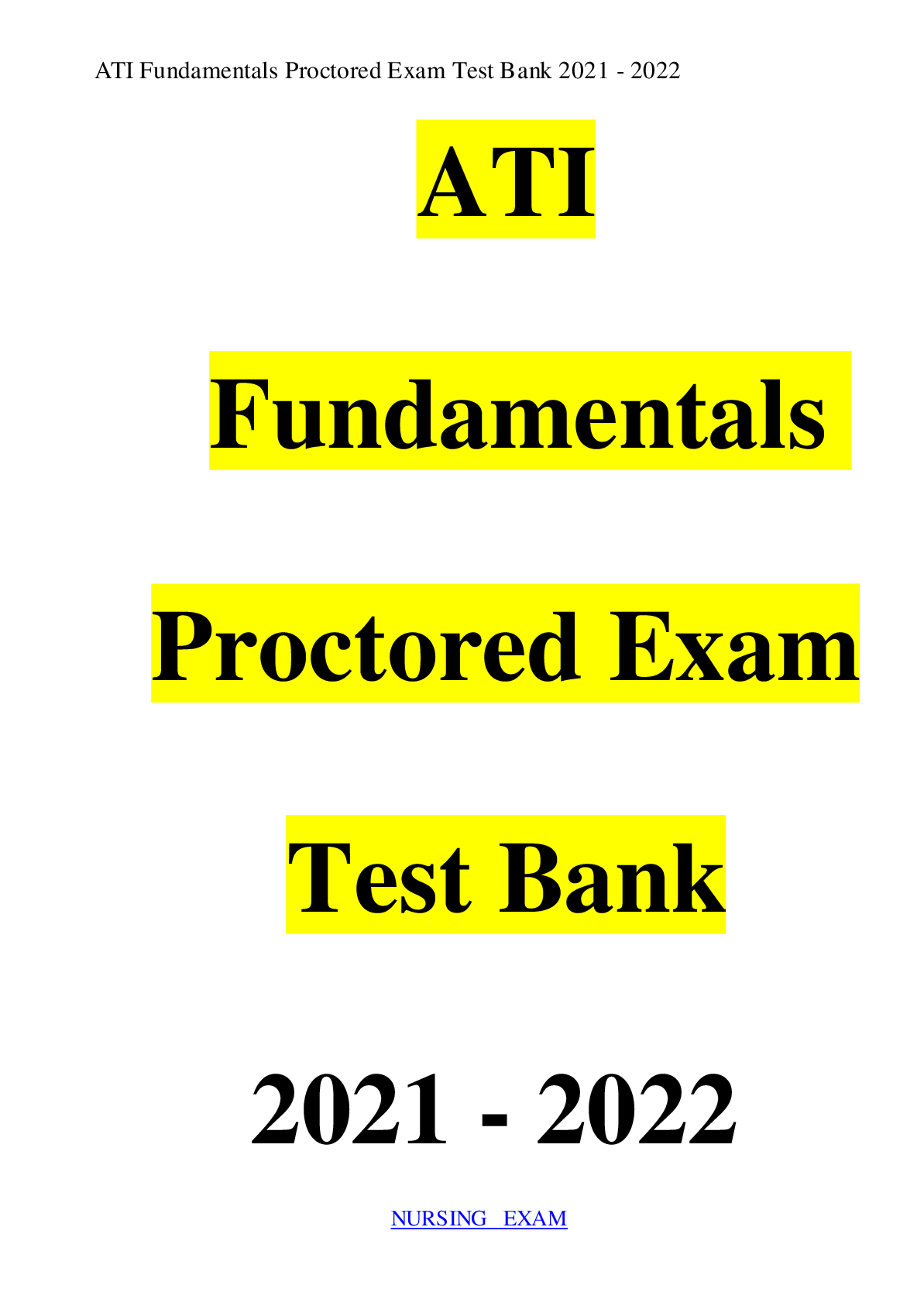

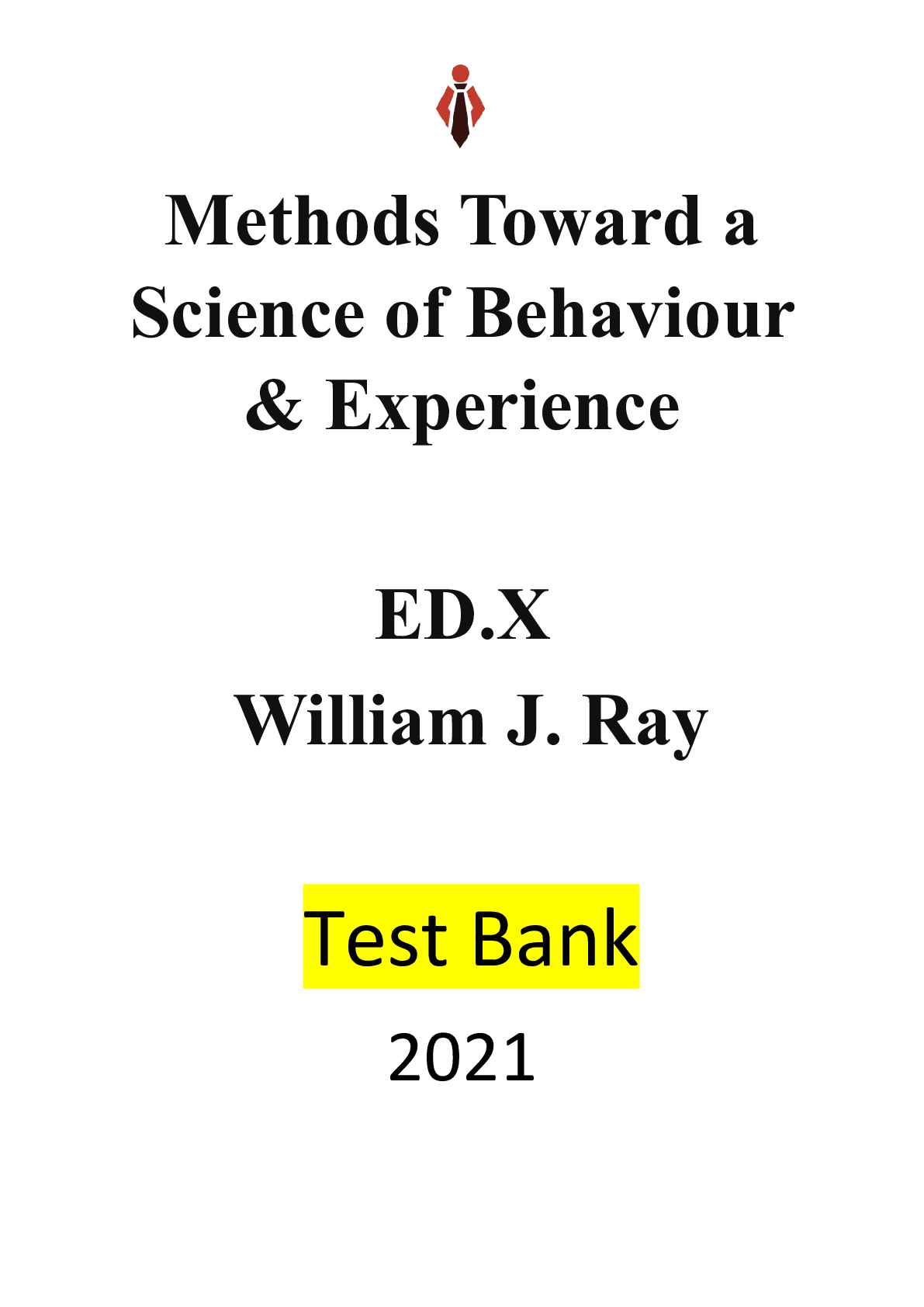
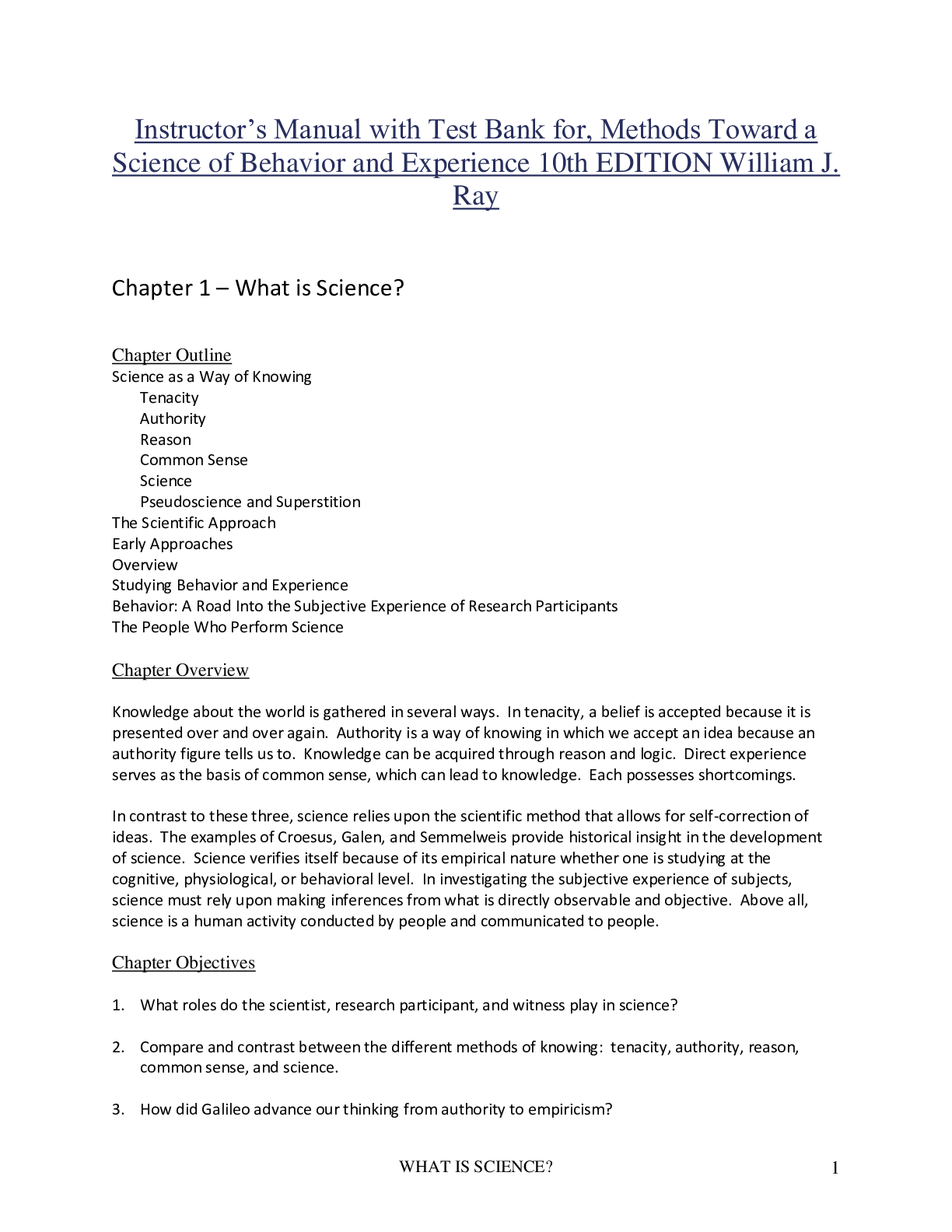
.png)

 Edition.png)

